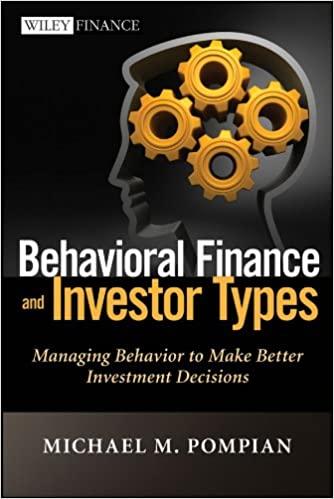Question
Arthur plans to invest 10,000 dollars in a ten-year bond of a technology company: Face Tech. Inc. The bond offers an 8 percent annual coupon
Arthur plans to invest 10,000 dollars in a ten-year bond of a technology company: Face Tech. Inc. The bond offers an 8 percent annual coupon and a yield to maturity of 10 percent. He plans to sell the bond in 4 years and invest the proceeds in a 3-year default-free zero coupon bond and cash. All bonds have a face value of $1000 per unit. The yield curve for the default free zero coupon bonds is provided in the following table:
| Default free zero coupon bond with face value of $1000 | Yield to Maturity |
| 1-year Bond | 7% |
| 2-year Bond | 8% |
| 3-year Bond | 9% |
| 4-year Bond | 10% |
| 5-year Bond | 12% |
| 6-year Bond | 13% |
| 7-year Bond | 14% |
| 8-year Bond | 15% |
(a) If Arthur can invest the coupons at an annual rate of 7 percent, and 4 years later, this coupon bond of Face Tech. Inc. can sell at a yield to maturity of 8.5%, what is his annualized holding period return on this bond?
(b) After Arthur collected his proceeds from his investments in Face Tech. Inc. 4 years later, he will use the money to purchase 8 units of a 3-year default-free zero coupon bond and put the rest in cash. What are the percentage weights in the 3-year default-free zero coupon bond and cash (out of Arthur's total proceeds), respectively? Assume that the yield curve on zero coupon bonds stays the same and you can ignore the liquidity premium.
Step by Step Solution
There are 3 Steps involved in it
Step: 1

Get Instant Access to Expert-Tailored Solutions
See step-by-step solutions with expert insights and AI powered tools for academic success
Step: 2

Step: 3

Ace Your Homework with AI
Get the answers you need in no time with our AI-driven, step-by-step assistance
Get Started


